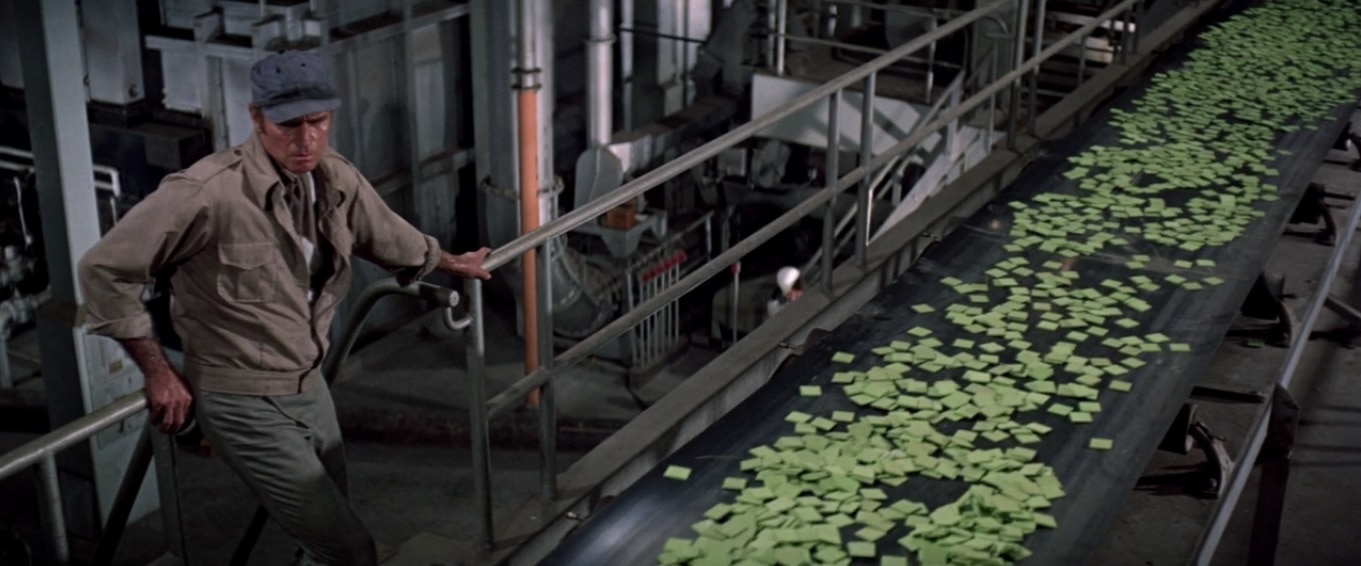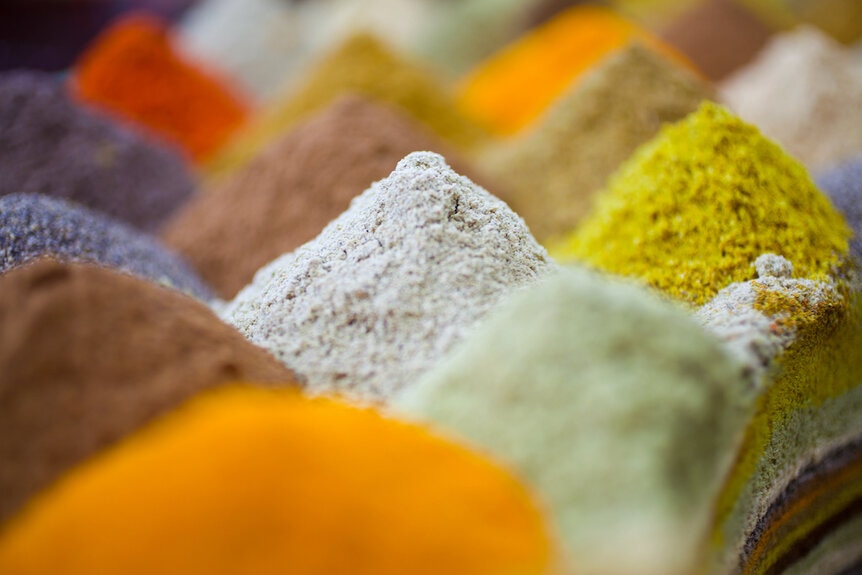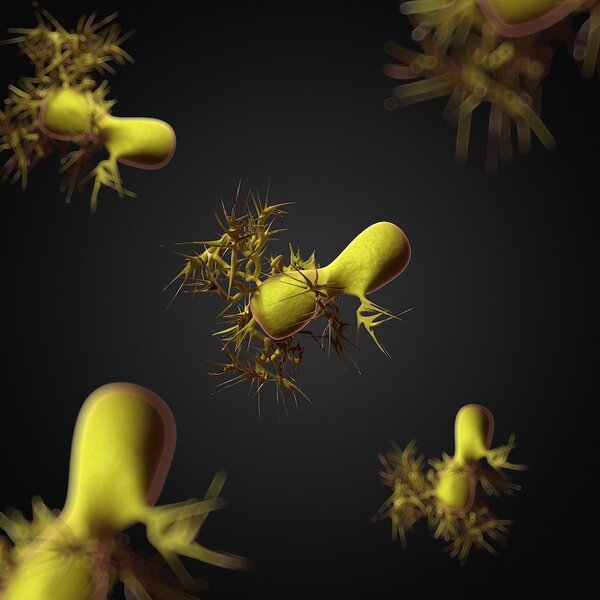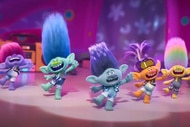Create a free profile to get unlimited access to exclusive videos, sweepstakes, and more!
Is eating people a solution to world hunger? The science behind 'Soylent Green'
IT'S PEOPLE! (But it's also a bad idea.)

Released in 1973, Soylent Green imagines a dystopian nightmare version of 2022 in which overpopulation and climate disaster have made the Earth nearly unlivable. Resource and housing shortages have exacerbated class stratification, with the wealthy living in lush, reinforced houses while the rest of the population is scrounging for scraps just to survive.
With not enough to eat, half of the world's population is sustained only by a staple food source created and sold by the Soylent Corporation. It comes in various colors, the best of which is the titular Soylent Green. The company bills their new green variety as more nutritious, having been manufactured from oceanic plankton, but by the end we know the truth. Soylent Green is people!
The film was a stark commentary about the dangers of destroying our environment and the lengths to which some corporations could go to maintain profit. Now that we're actually in 2022, the world has seen an increase in novelty foods, including one supposed meal replacement shake named after the famed movie.
The question now is, could we really make Soylent? And would we want to?
CONVERTING CORPSES TO CRACKERS
Supposing, of course, we decided we wanted to transform our lost loved ones into food, we could definitely do it. The infrastructure already exists. After all, humans are just meat, no different from any other animal at the end of the day.
The easiest way to do it, but the least palatable — particularly if you're trying to hide what you're doing, as was the case in the film — would be to treat humans the way we treat livestock. Establish a butchering process, package the cut meat, put it on the shelf. Job done. But we suspect that if we're going to eat people, we'll want at least the illusion that we're eating something else. So, let's think of other options.
If you've ever looked at a seasoning packet you've probably noticed they list chicken, beef, pork, or other meats as ingredients. Yet, when you look inside, all you'll find is powder. Where's the beef? It's in the powder, of course. And if we want to make a human biscuit, that's probably the way to go.
Meat powders are fairly simple to produce. Typically, the skin and bones of your chosen animal are removed. Though, in a pinch that may not be strictly necessary. After dressing, they go through a dehydration process either using a dehydrator or cooking over a low temperature for an extended period. The aim is to remove as much moisture as possible. Finally, the meat is ground into a powder and sifted to remove any chunks which were missed.
At this point, your Soylent people are unrecognizable and ready to be baked into crackers or used for soup bases. The possibilities are endless.
WOULD SOYLENT MAKE A GOOD FOOD?
Nutritionally, sure. Human bodies are made of the same sorts of things as other animals. You could get protein and fat, albeit at different distributions than other animals. All things being equal, eating human meat is a perfectly efficient way of calorie exchange. Certainly, other animals have done it throughout our history.
Unfortunately — or fortunately, depending on if you're being eaten or doing the eating — things aren't equal. Animal meat produced at factory farms undergoes all sorts of precautions in order to prevent the transmission of disease to the people consuming it.
Livestock animals are given antibiotics throughout their lives and the presence of disease is usually cause for that individual animal to be discarded. Even still, factory forms still present a significant disease risk. If we were eating people, especially ordinary people, there's little guarantee those same precautions would be present. Moreover, there are comparatively few diseases which jump species from animals to humans. Every disease a person has necessarily infects humans, so the risk of disease transmission from contaminated meat would be immense.
Of course, properly cooking and preparing our Soylent could eliminate a significant number of those diseases, but not all of them.
Mad Cow Disease occasionally prompts recalls of tainted meat. The disease is caused by prions, which cause proteins in the brain to fold irregularly. Prions don't respond to temperatures at which meat is normally cooked. In order to fully denature prions they have to be heated to temperatures of 1,000 degrees Celsius or more. They've been shown to remain effective even after being heated to 600 C. Nobody cooks meat at those temperatures.
Similar prion diseases exist in humans and are documented to have been transmitted through cannibalism. Creating a system in which half the human population gets most of their food from human remains might be a highly efficient way to end our species.
IS SOYLENT EVEN SUSTAINABLE?
Let's suppose we solve all those problems. A robust marketing campaign has convinced humanity that eating the deceased is not only acceptable but noble, and we've discovered ways to effectively rid the meat of dangerous pathogens. Could it even sustain itself?
This one is a pretty obvious no. The only way this system is sustainable is if there's a consistent one for one exchange. Every living person gets to eat one dead person. Then, they themselves are eaten. You'd have to create a sort of horrible perpetual motion machine of consumption in which no energy is ever lost. Even still, the average human about 136 pounds and the average adult in America eats roughly 525 pounds of food every year. Even if you were eating everything, organs, bones, the whole shebang a person would only provide about a quarter of the food you'd need for a single year.
Moreover, the birth and death rates don't line up. Last year, it's estimated that roughly 140 million people were born while only 60 million died, and that was during a disease pandemic.
Not only is the prospect of turning people into crackers despicable and dangerous, it's also just a bad business model.
















